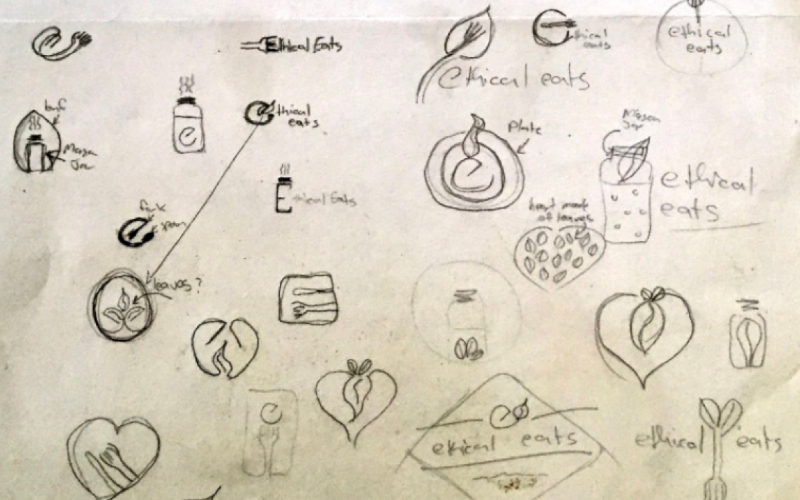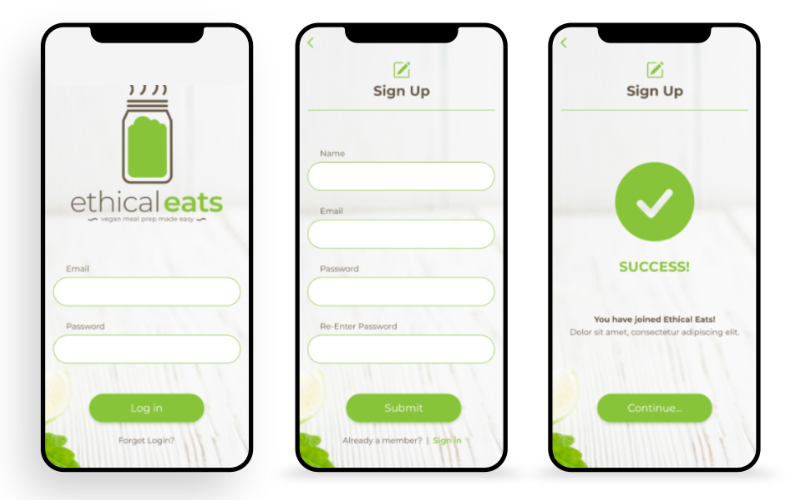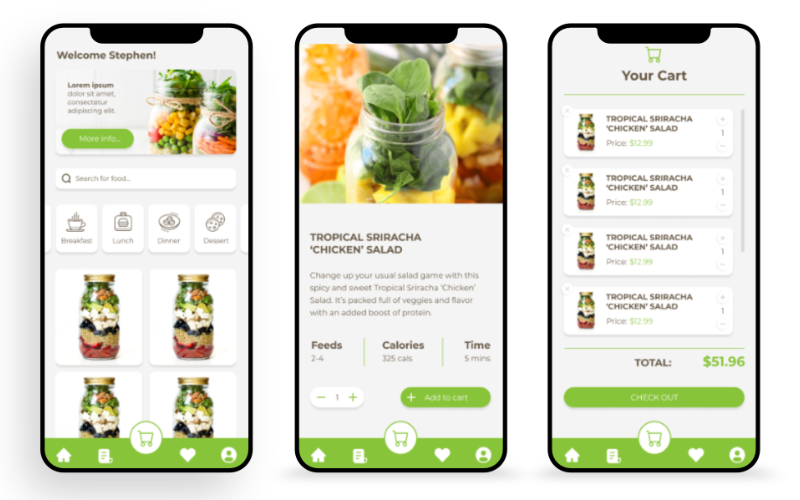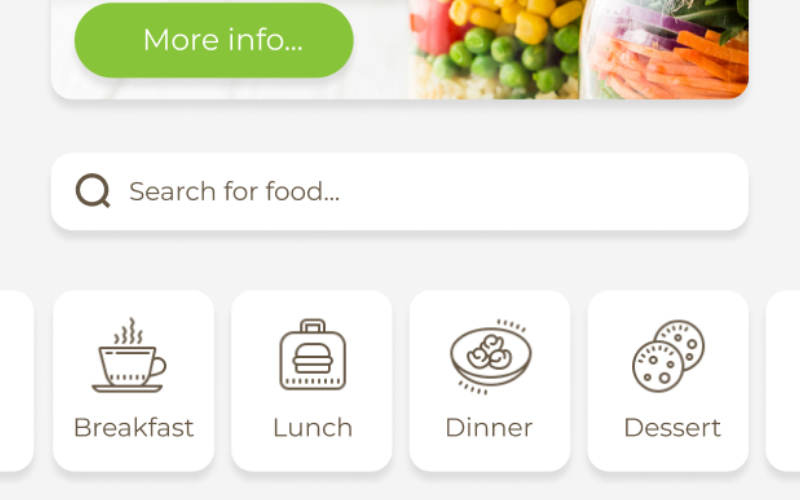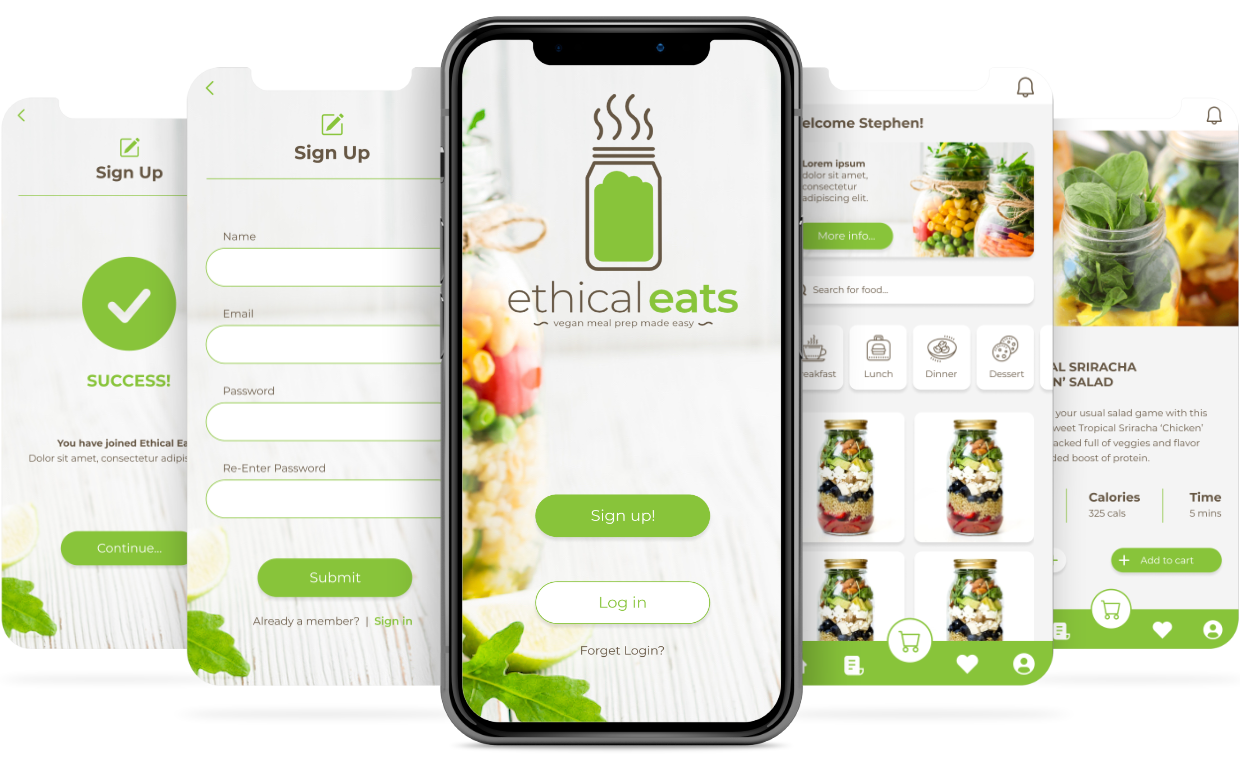Ethical Eats
Identity, Application & Website
The Ethical Eats project includes identity design, web based mobile app UI design, and a brochure site design. Created for a vegan pre-made and pre-packaged meal delivery service.
* Work in progress.
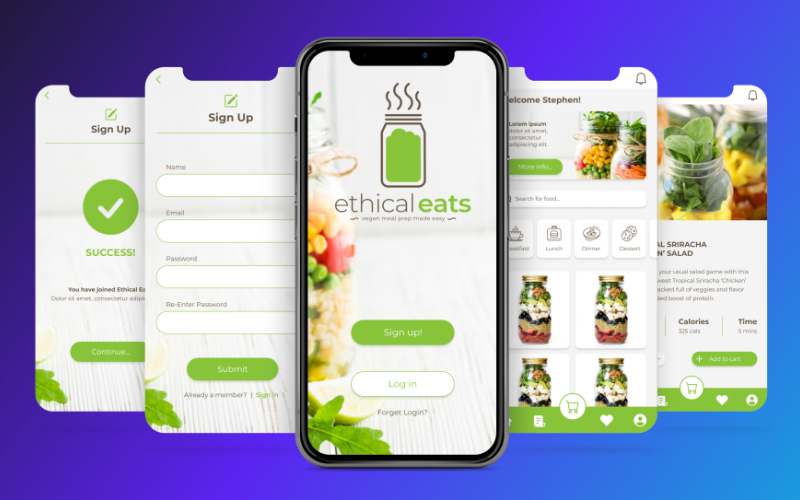
The Process
Problem
The world is a busy place, and we all have busy lives. It is too easy to slip into the convenience of ordering unhealthy food in an attempt to save time. But with ease, comes risk. How can we make better, quicker choices that benefit our health?
Solution
Create a clean and appealing identity that communicates a healthy, time-saving alternative to fast food. Develop an application that holds these values dear while providing an easy to use ordering system for users to make healthier, more convenient choices.
Research
- Survey / Brief
- Colours
- Typography
Design
- Sketches
- Low-Fi Wireframes
- Style Sheets
Prototype
- Hi-Fi Wireframes
- Componants
- Interactions
Evaluate
- User Testing
- Design Guidelines
- Review
Research
The research phase lays the foundation for the entire project. In this phase, I gather information about the project's scope, the target audience, the competition, and the industry trends. The research phase typically includes the following steps:
- Defining the project scope:
Here, I clearly define the project's purpose, goals, and objectives. This step helps me to have a clear understanding of what I need to achieve through the project. - Identifying the target audience:
I research and analyze the target audience's demographics, psychographics, and behaviour. Understanding the target audience helps me create designs that resonate with them and effectively communicate the message. - Conducting a competitive analysis:
In this phase I research and analyze the competitors in the industry. This step helps me to identify the industry's best practices and create designs that differentiate the client's brand from competitors. - Researching industry trends:
Here I research and analyze the current and future trends in the industry. This step helps me to create designs that are relevant and up-to-date. - Collecting inspiration:
Finally I gather inspiration from various sources, such as design blogs, websites, books, and magazines. This step helps me to explore different design styles and approaches.
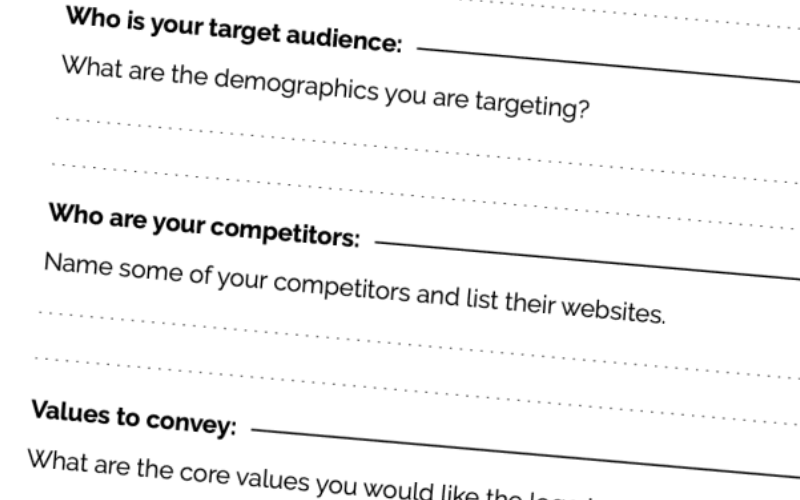
A design brief is a document that outlines the goals, objectives, and constraints of a design project. Its purpose is to provide a clear and concise understanding of the project requirements to the designers or design team responsible for creating a solution.
Design
The design phase is a critical step in any design project, as it involves the creation of the initial concept and development of the overall plan. The primary goal of the design phase is to define the problem to be solved, establish project goals and objectives, and create a preliminary design that outlines the direction for the project.
The design phase generally involves several key steps:
- Ideation:
This involves generating a wide range of ideas for the project, exploring various options and possibilities, and developing a creative vision for the final product. - Concept Development:
In this step, I select the most promising ideas from the ideation phase and begin to refine them into more concrete concepts. This may involve sketching, prototyping, or using other design tools to flesh out the initial ideas. - Design Specification:
Once the initial concepts have been developed, I create a detailed specification that outlines the key features, functionalities, and other requirements of the final product. This specification serves as a roadmap for the remainder of the design process. - Design Review:
The design specification is then reviewed by stakeholders and other relevant parties, who provide feedback and make suggestions for improvement. - Iteration:
Based on feedback from the design review, I may make revisions to the design specification and continue to refine the concepts until a final design is agreed upon.
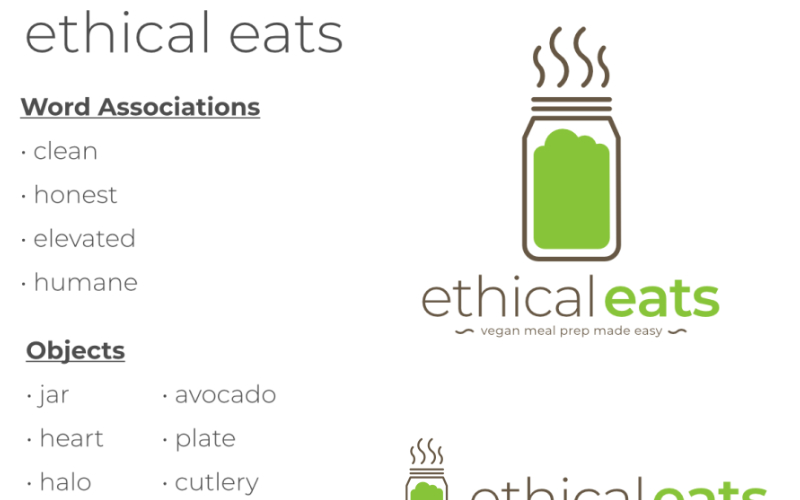
During ideation, designers may use a variety of techniques and tools to generate ideas, such as brainstorming, mind mapping, sketching, or prototyping.
Prototype
In the prototyping phase of a design project I create a preliminary version or model of a product or service. The prototyping phase involves several steps:
- Ideation:
I generate ideas and select the most promising ones for prototyping. - Conceptualization:
I then create diagrams, and wireframes to visualize the design and its functionality. - Creation:
Using the conceptual designs as a guide, I create a physical or digital prototype. - Refinement:
Based on user feedback, I make changes to the design and create a new iteration of the prototype. - Repeat:
I repeat the testing and refinement process until the design is ready for production.
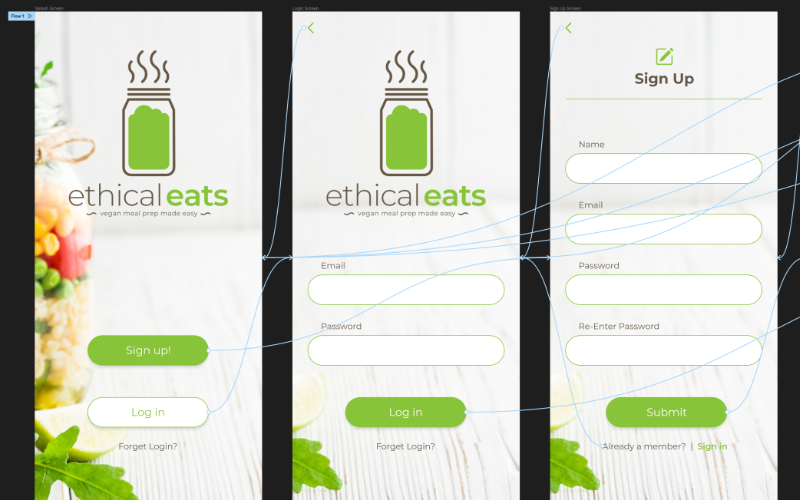
During ideation, designers may use a variety of techniques and tools to generate ideas, such as brainstorming, mind mapping, sketching, or prototyping.
Evaluate
This phase involves analyzing the design solution to determine its effectiveness in meeting the project objectives and goals. The purpose of this phase is to assess the quality of the design and identify any areas that need improvement.
Here are some key steps involved in the evaluation phase of a design project:
- Review the design brief:
The design brief is the document that outlines the project requirements and objectives. It is essential to review the brief at this stage to ensure that the design solution meets the project requirements. - Evaluate the design solution:
This involves analyzing the design solution to determine its effectiveness in meeting the project objectives. This can be done through various methods such as user testing, surveys, and feedback from stakeholders. - Identify strengths and weaknesses:
During the evaluation, it is important to identify the strengths and weaknesses of the design solution. This can help to determine areas that need improvement or further development. - Make revisions:
Based on the feedback received during the evaluation, I make revisions to the design solution to improve its effectiveness in meeting the project objectives. - Finalize the design:
Once the revisions have been made, I can finalize the design and prepare it for implementation.
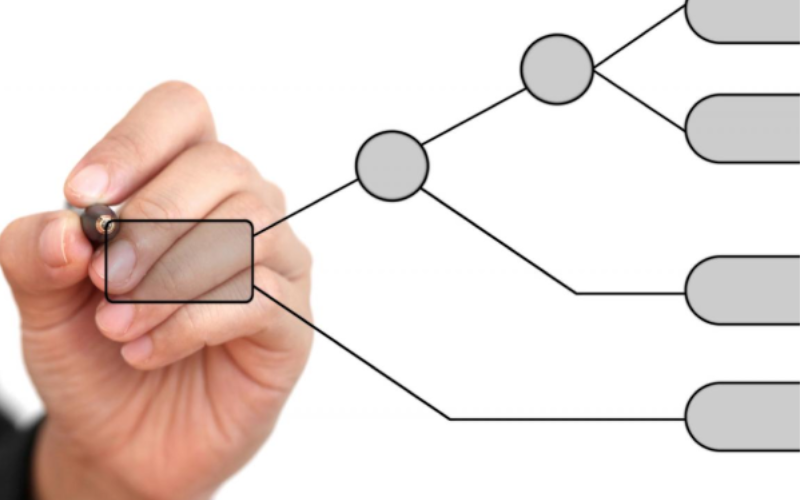
Evaluation in design refers to the process of assessing the success and effectiveness of a design solution. It is an essential step in the design process that helps to ensure that the final design meets the needs and goals of its intended users.
